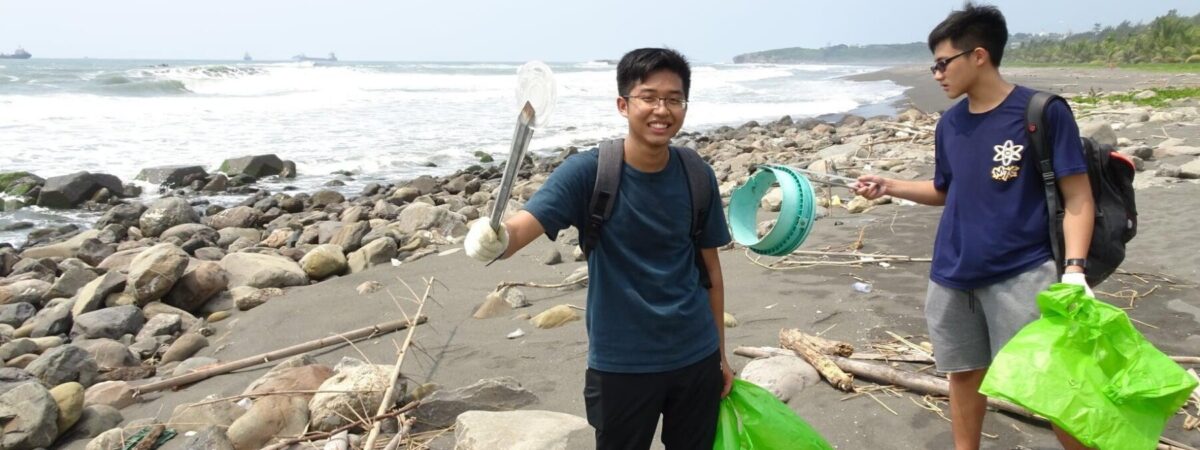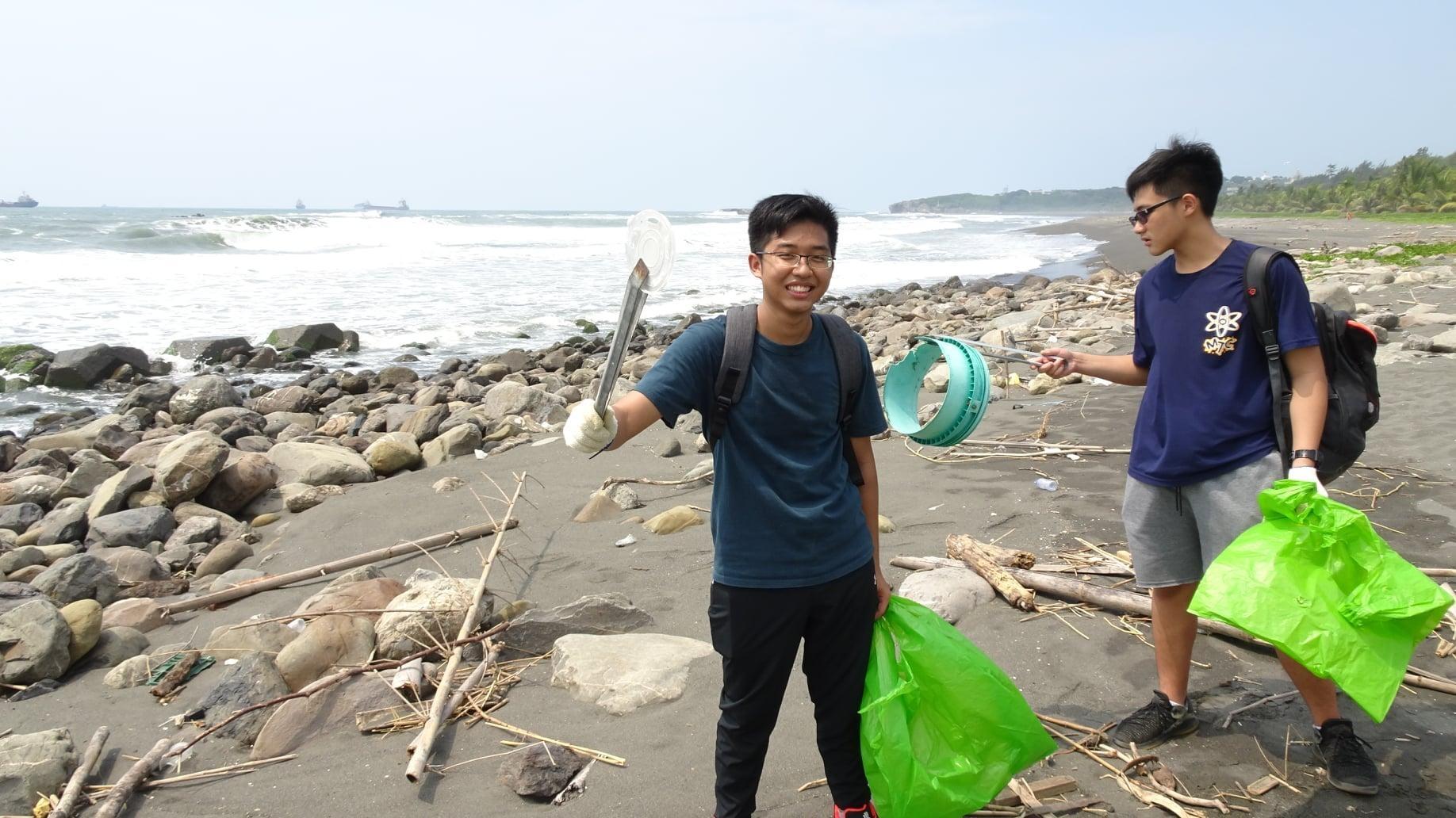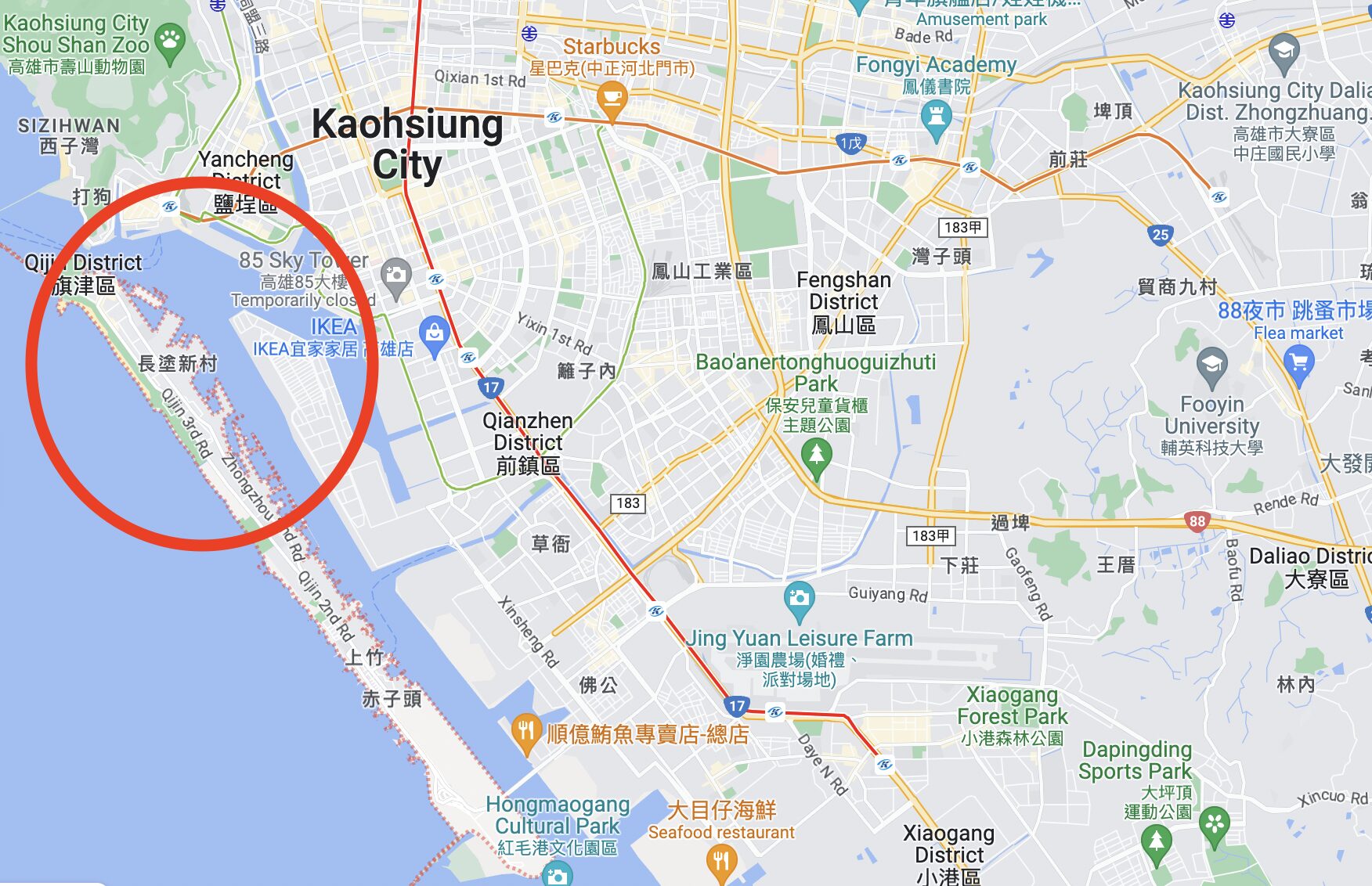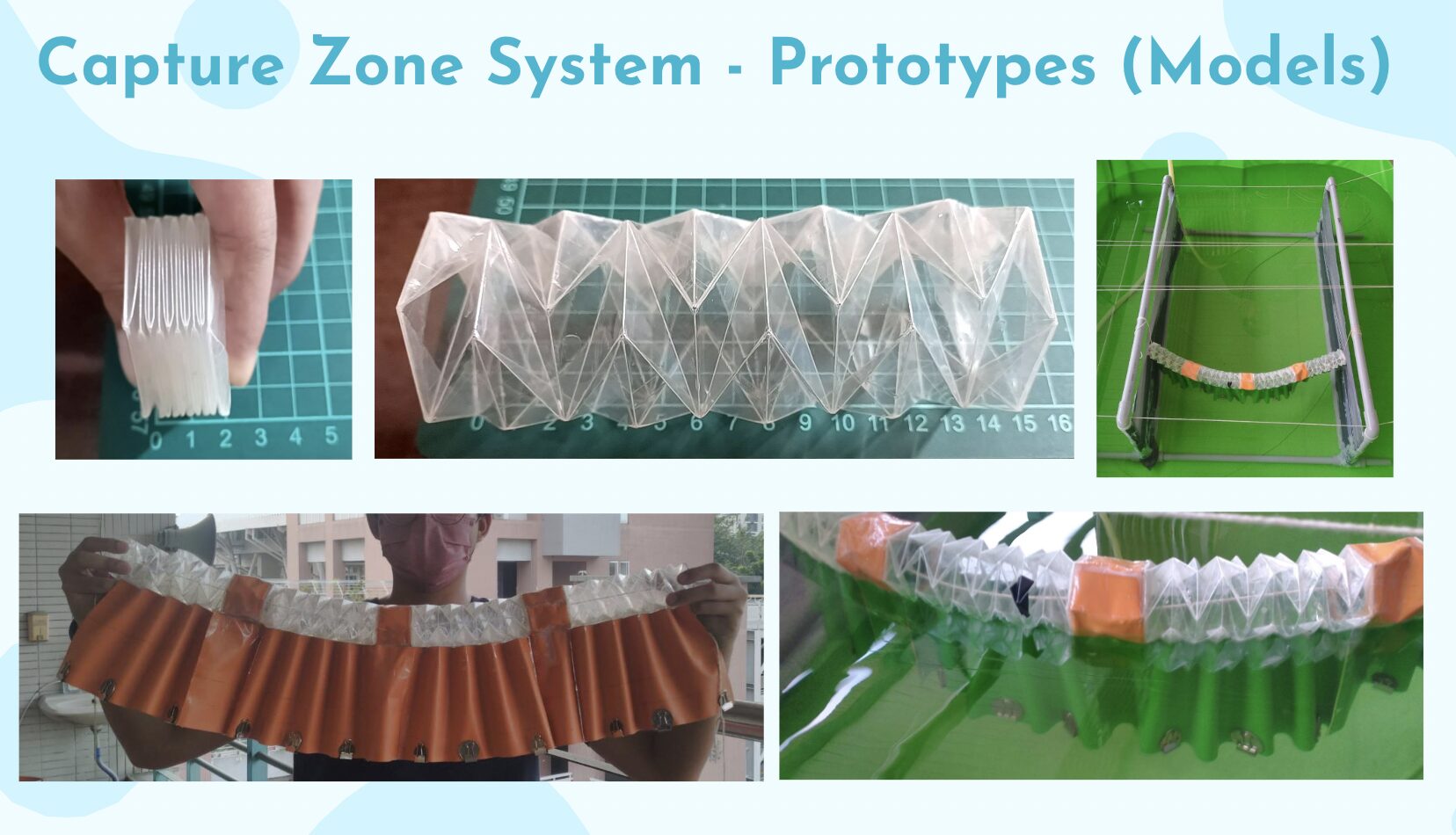
Almost every year, our school organizes volunteer beach cleanups to instill awareness of the importance of marine protection among students. Through this experience, students learn valuable lessons. One particular group of students, including Yu-Ann Tsai, Ching-Lin Hsieh, Zi-Kang Chen, Shi-Yu Chin, took it upon themselves to research methods of intercepting garbage and preventing it from entering the ocean. They initiated a project called “Innovating an Interception Device to Protect Life Below Water.” Their belief that most plastic debris and garbage comes from land through the passage of rivers motivated them to take this further step in guarding the ocean.

Yu-Ann Tsai and Zu-Kan Chen participated in the beach clearing activity, feeling that collecting trash from the beach was inefficient.

Yu-Ann Tsai demonstrated the team’s design in an online conference to Japanese students .
Yu-Ann Tsai, the student leader of the team, summarized their journey, saying, “Keep going with your efforts, even if you don’t know where you’re headed. If you plan each step carefully and persevere, you’ll eventually enjoy the fruitful outcomes.”

In Cijin District, marked as the circled area on the map, the students conducted a community walk where they observed the surroundings and interviewed the locals.

The prototype of the capture zone system designed by our student team.

The student built an experimental tank on the school balcony to evaluate the effectiveness of their design.
“Keep going with your efforts, even if you don’t know where you’re headed. If you plan each step carefully and persevere, you’ll eventually enjoy the fruitful outcomes.” – Yu-Ann Tsai, Student
“This experience of project work with my teammates was just like connecting dots.” – Ching-Lin Hsieh, Student
Students possess incredible potential and have the power to make a significant impact on the world around them. When we motivate our students to take action, we are not only fostering a sense of agency and responsibility but also sowing the seeds for future leadership. Here are some of the methods we can use to support student agency:
“This experience of project work with my teammates was just like connecting dots,” said Ching-Lin Hsieh, another student from our team. In this project, the students took charge of their own learning by connecting the acquired skills and knowledge, collaborating with their partners, and exchanging perspectives.
Students hold the key to the future, possessing both the power and responsibility to shape the world into a better place. As the next generation of leaders, they are making a positive impact and addressing pressing global challenges. As educators, all we have to do is ignite the fire within them and inspire them to take action.